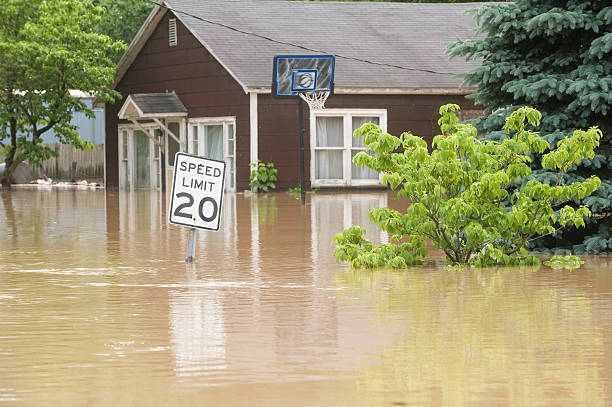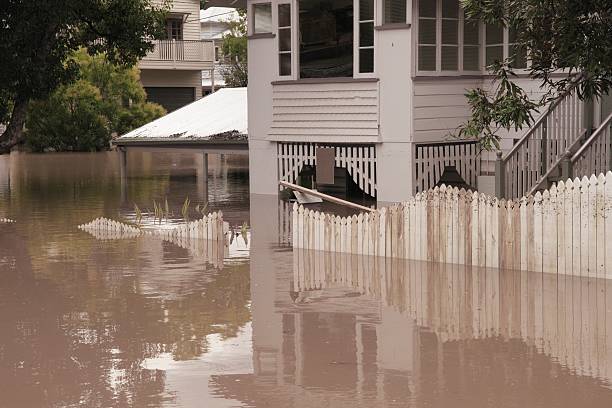Introduction
Floods can wreak havoc on homes and properties, causing extensive damage and financial loss. Understanding the importance of flood insurance is paramount for homeowners and renters alike. In this guide, we’ll delve deep into the realm of flood insurance, exploring its types, coverage options, and essential FAQs to ensure you’re adequately prepared for any flooding eventuality.

Define the Importance of Flood Insurance
Flood insurance provides crucial financial protection against losses resulting from flood damage. Unlike standard homeowner’s insurance, which typically excludes flood coverage, flood insurance policies are specifically designed to cover damages caused by flooding, offering peace of mind to property owners in flood-prone areas.
Types and Categories
Flood insurance comes in various forms to cater to different needs and situations. Understanding the types and categories is essential for selecting the most suitable coverage for your property.
National Flood Insurance Program (NFIP)
The NFIP, administered by FEMA, offers flood insurance policies to homeowners, renters, and businesses in participating communities. These policies provide coverage for building structure and contents, helping policyholders recover from flood-related losses.
Private Flood Insurance
Private insurers also offer flood insurance policies outside the NFIP. These policies may offer additional coverage options and flexibility compared to NFIP policies, but premiums and coverage terms can vary significantly depending on the insurer and the property’s location and risk.
Coverage Categories
Flood insurance typically covers two main categories: building property and personal property. Building property coverage protects the structure of the building, including its foundation, walls, and electrical systems. Personal property coverage extends to belongings inside the property, such as furniture, appliances, and clothing.
Symptoms and Signs
Recognizing the signs of potential flood damage is crucial for prompt action and mitigation efforts. Here are some common symptoms and signs to watch out for:
Water Stains and Mold Growth
Water stains on walls or ceilings and the presence of mold or mildew can indicate previous or ongoing water intrusion, signaling potential flood damage.
Musty Odors
Musty or damp odors inside the property, especially in basements or crawl spaces, may indicate hidden moisture problems and potential flood damage.
Cracks in Foundation
Cracks or deterioration in the property’s foundation, walls, or floors can be signs of structural damage caused by flooding or water seepage.
Causes and Risk Factors
Understanding the factors that contribute to flood risk is essential for assessing your property’s vulnerability and taking proactive measures to mitigate potential damage.
Geographic Location
Properties located in flood-prone areas, such as coastal regions, river floodplains, or low-lying areas, are at higher risk of flooding due to their proximity to water bodies and natural drainage patterns.

Weather Patterns
Extreme weather events, such as heavy rainfall, hurricanes, or snowmelt, can trigger flooding, especially in areas with inadequate drainage infrastructure or natural flood defenses.
Urban Development
Urbanization and changes in land use can alter natural drainage patterns and increase flood risk by reducing the land’s ability to absorb water and increasing runoff into nearby water bodies.
Diagnosis and Tests
Assessing flood risk and evaluating the need for flood insurance requires careful analysis and consideration of various factors. Here are some diagnostic tools and tests used in the process:
Flood Hazard Maps
FEMA’s Flood Insurance Rate Maps (FIRMs) provide valuable information on flood zones, base flood elevations, and flood risk assessments for specific areas, helping property owners understand their flood exposure.
Property Inspections
Professional property inspections can identify vulnerabilities and potential flood hazards, allowing property owners to take proactive measures to mitigate risks and protect their investment.
Risk Assessment
Conducting a comprehensive risk assessment involves analyzing factors such as property location, elevation, construction type, and historical flood data to determine the likelihood and severity of flood damage.
Treatment Options
Mitigating flood risk and minimizing potential damage require a combination of preventive measures, structural enhancements, and insurance coverage. Here are some treatment options to consider:
Floodproofing
Implementing floodproofing measures, such as installing flood barriers, waterproofing foundations, and elevating utilities, can help minimize flood damage and protect property assets.
Insurance Coverage
Securing adequate flood insurance coverage is essential for financial protection against flood-related losses, ensuring that property owners can recover and rebuild in the event of a flood disaster.
Drainage Improvements
Improving drainage systems, such as installing French drains, swales, or retention ponds, can help divert excess water away from the property, reducing the risk of flooding during heavy rainfall or storm events.
Preventive Measures
Preventing flood damage requires a proactive approach that combines awareness, preparedness, and risk reduction strategies. Here are some preventive measures to safeguard your property:
Stay Informed
Monitor weather forecasts and flood alerts issued by local authorities to stay informed about potential flood risks in your area and take timely precautions.

Elevate Property
Elevating the property’s foundation or installing barriers, such as floodgates or levees, can help minimize flood damage by preventing water intrusion into the living space.
Secure Valuables
Protect valuable belongings and important documents by storing them in waterproof containers or elevated areas to prevent damage during flooding.
Personal Stories or Case Studies
Real-life experiences provide valuable insights into the importance of flood insurance and the impact of flooding on individuals and communities. Here’s a glimpse into some personal stories and case studies:
John’s Story: Recovering from Flood Damage
John, a homeowner in a flood-prone area, experienced significant flood damage to his property during a severe storm. Thanks to his NFIP flood insurance policy, John was able to rebuild his home and replace damaged belongings, providing him with financial security and peace of mind.
Community Resilience: Rebuilding After Disaster
Following a devastating flood, the residents of Smithville came together to rebuild their community and implement flood mitigation measures, including improved drainage systems and elevated building standards. Through collective efforts and support from FEMA and private insurers, Smithville emerged stronger and more resilient than ever.
Expert Insights
Gaining insights from flood insurance experts and industry professionals can help property owners make informed decisions and navigate the complexities of flood insurance. Here are some expert quotes and advice:
Dr. Emily Parker, Flood Risk Analyst
“Flood insurance is a critical tool for protecting homes and businesses against the financial devastation of flooding. By understanding your flood risk and securing adequate insurance coverage, you can mitigate potential losses and safeguard your property investment.”
Mark Johnson, Insurance Agent
“As an insurance agent specializing in flood insurance, I’ve seen firsthand the difference it can make in helping homeowners recover from flood damage. By working with a knowledgeable agent and exploring your coverage options, you can find a policy that meets your needs and provides peace of mind.”
Conclusion
In conclusion, flood insurance is a vital safeguard against the financial repercussions of flood damage, offering peace of mind and protection to property owners in flood-prone areas. By understanding the types of coverage available, assessing flood risk factors, and implementing preventive measures, you can minimize the impact of flooding and ensure a secure future for your property


